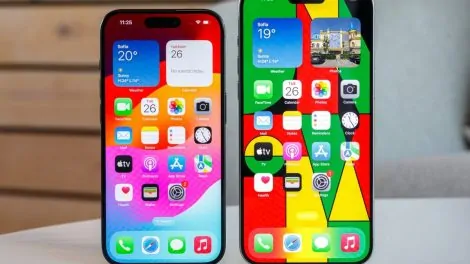Huawei has emerged victorious in the competitive smartphone market, overtaking Apple in new phone activations across China during the fourth quarter of 2024. This milestone highlights a significant shift in consumer preferences within the Chinese market and underscores Huawei’s strategic resilience despite external challenges. The figures reveal a noteworthy development in the ongoing battle for dominance in one of the world’s most lucrative smartphone markets. These results mark a turning point not only for Huawei but also for the broader competitive dynamics within the global tech industry.

Huawei’s resurgence can be attributed to a variety of factors that align with the specific needs and preferences of Chinese consumers. Its ability to innovate in hardware and software while navigating geopolitical pressures has cemented its position as a dominant player in the market. The company’s latest smartphone offerings have garnered widespread praise for their advanced technology, including cutting-edge cameras, efficient processors, and sleek designs. These features have resonated strongly with local buyers, many of whom value high performance and aesthetic appeal in their devices.
Apple, which has traditionally held a strong position in the Chinese market, found itself outpaced by Huawei during this critical period. The data reflects a dip in Apple’s share of new activations, signaling a potential challenge for the tech giant as it faces increasing competition from domestic brands. While Apple has enjoyed sustained popularity due to its premium branding and ecosystem integration, it has struggled to match the pace of local competitors who are offering devices with comparable or superior features at more competitive price points.
The competitive pricing strategy employed by Huawei has played a pivotal role in its success. By providing premium smartphones at lower costs, Huawei has captured the attention of cost-conscious consumers who still seek high-quality devices. This approach has not only allowed Huawei to win over new customers but also to retain its existing user base amidst fierce competition. The affordability of its devices, combined with state-of-the-art technology, has positioned Huawei as a brand that delivers exceptional value.
Another critical factor contributing to Huawei’s victory is its focus on fostering a robust ecosystem. The company has made significant strides in developing an interconnected range of products and services, including wearables, smart home devices, and cloud-based solutions. This ecosystem approach has strengthened customer loyalty, as users find value in seamless integration across their devices. Huawei’s commitment to creating a cohesive and user-friendly experience has further solidified its market position.
Local consumer sentiment has also played a role in Huawei’s success. The Chinese government’s emphasis on supporting domestic enterprises and reducing reliance on foreign technologies has bolstered Huawei’s appeal among patriotic buyers. Many consumers view purchasing Huawei devices as a way to support local innovation and economic growth, making the brand a symbol of national pride. This alignment with government policies and consumer sentiment has provided Huawei with a unique competitive advantage.
In addition to its domestic achievements, Huawei’s performance in the global market has also been noteworthy. Despite facing restrictions and bans in several international markets, the company has continued to innovate and adapt. Its ability to maintain a strong foothold in China, the largest smartphone market in the world, has allowed Huawei to remain a formidable player on the global stage. The fourth-quarter results serve as a testament to the company’s resilience and adaptability in the face of adversity.
The competitive landscape in China remains dynamic, with several domestic brands vying for market share. Companies like Xiaomi, Oppo, and Vivo are also making significant strides, offering feature-rich devices that appeal to a broad range of consumers. However, Huawei’s ability to outpace these rivals, along with Apple, underscores its strategic focus and execution. The company’s investment in research and development has been a key differentiator, enabling it to stay ahead in the technology race.
Apple, on the other hand, faces a critical juncture as it reassesses its strategy for the Chinese market. The company’s reliance on premium pricing and brand loyalty has been a double-edged sword. While these factors have helped maintain a core base of devoted users, they have also limited Apple’s reach among more price-sensitive consumers. To regain momentum, Apple may need to consider introducing more competitively priced models or enhancing the value proposition of its existing offerings.
The shift in new phone activations also sheds light on broader trends within the Chinese smartphone market. Consumers are increasingly prioritizing features such as 5G connectivity, longer battery life, and advanced camera capabilities. Huawei’s focus on addressing these preferences has allowed it to capture a significant share of the market. Moreover, the rise of e-commerce and direct-to-consumer sales channels has further amplified Huawei’s reach, enabling it to connect with customers more effectively.
Data from the fourth quarter also reveals interesting patterns in consumer behavior. A detailed breakdown of new phone activations indicates that Huawei’s flagship models were particularly popular among younger demographics, while mid-range offerings resonated with older users. This segmentation highlights Huawei’s ability to cater to diverse customer needs, a strategy that has proven instrumental in its overall success. The table below provides a comparative analysis of new phone activations by brand and price segment during the quarter:
| Brand | High-End Models (Above $800) | Mid-Range Models ($400-$800) | Entry-Level Models (Below $400) |
|---|---|---|---|
| Huawei | 45% | 38% | 17% |
| Apple | 50% | 30% | 20% |
| Xiaomi | 20% | 45% | 35% |
| Oppo | 25% | 40% | 35% |
This table highlights Huawei’s strong performance across all price segments, particularly in the high-end category, where it has successfully challenged Apple’s dominance. The data underscores the versatility of Huawei’s product portfolio, which caters to a broad spectrum of consumers.
The implications of Huawei’s resurgence extend beyond the smartphone market. The company’s success reflects broader shifts in the global tech industry, including the rise of Chinese brands as major players. As Huawei continues to innovate and expand its ecosystem, it sets a benchmark for other companies seeking to compete in the ever-evolving technology landscape.
Huawei’s victory over Apple in new phone activations during the fourth quarter of 2024 represents a significant achievement for the company. By leveraging competitive pricing, innovative technology, and strong consumer sentiment, Huawei has solidified its position as a leader in the Chinese market. While challenges remain, the company’s ability to navigate a complex and competitive environment offers valuable lessons for the tech industry as a whole. For Apple and other competitors, the results serve as a reminder of the need for adaptability and a deep understanding of local market dynamics.










Add Comment